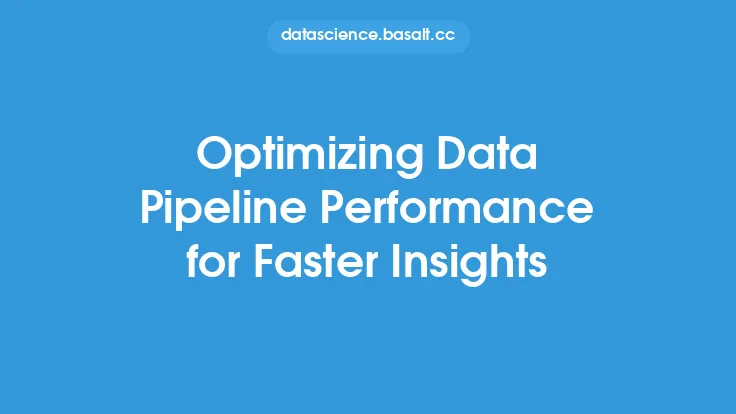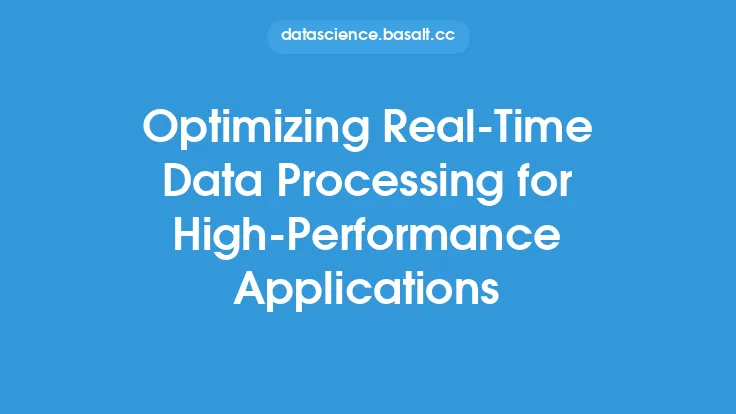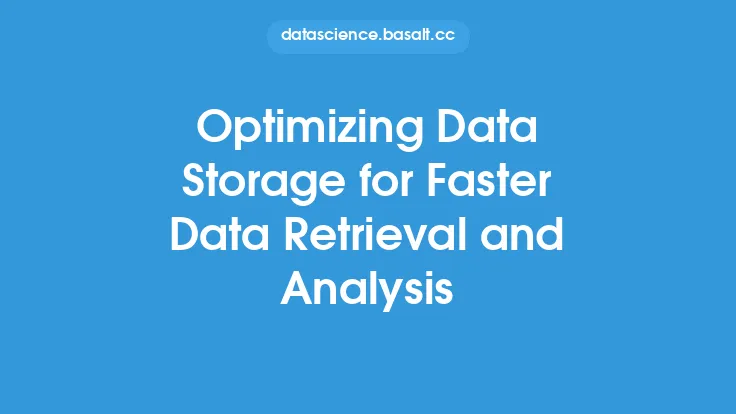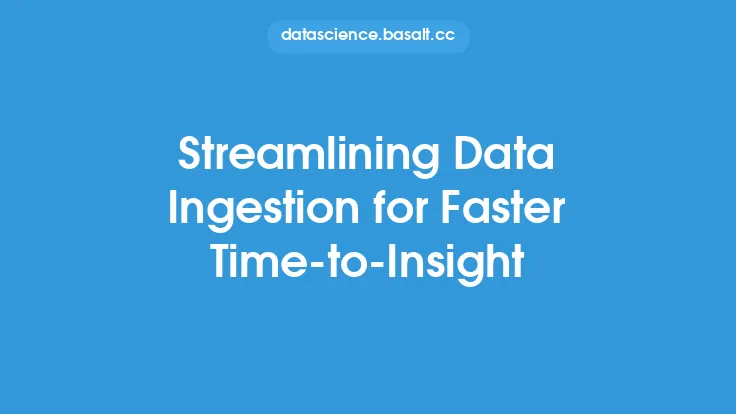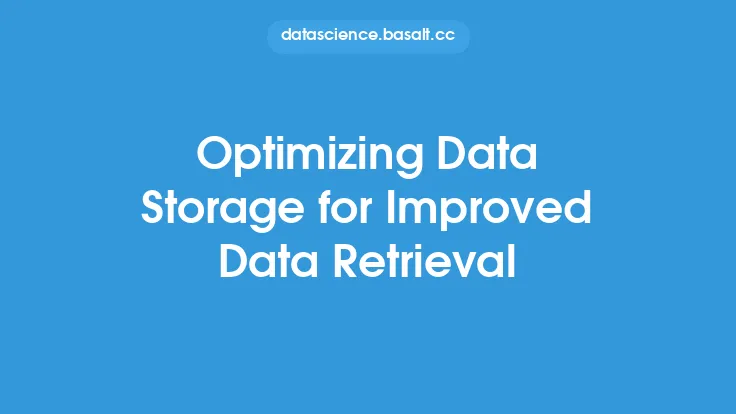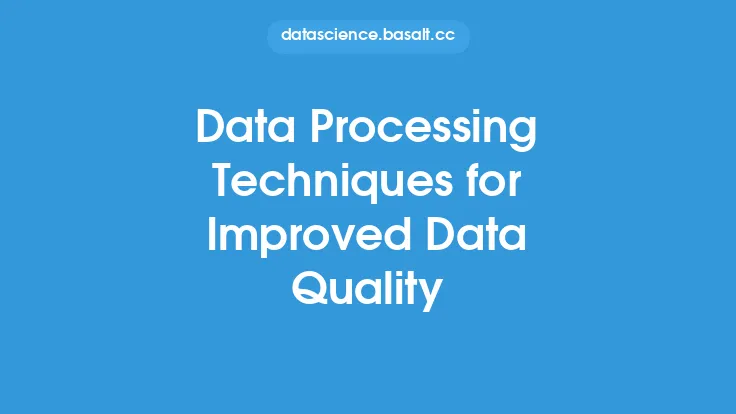The ability to process data efficiently is crucial for organizations to gain insights and make informed decisions. As the volume and complexity of data continue to grow, optimizing data processing has become a key challenge for data engineers. In this article, we will explore the various techniques and strategies for optimizing data processing, enabling faster insights and better decision-making.
Understanding Data Processing Pipelines
Data processing pipelines refer to the series of processes that data goes through, from ingestion to analysis. These pipelines typically involve multiple stages, including data ingestion, data transformation, data storage, and data analysis. Each stage of the pipeline can be optimized to improve the overall efficiency of data processing. For instance, data ingestion can be optimized by using distributed file systems, such as Hadoop Distributed File System (HDFS), or cloud-based storage solutions, such as Amazon S3. Data transformation can be optimized by using parallel processing frameworks, such as Apache Spark, or data processing engines, such as Apache Beam.
Optimizing Data Storage and Retrieval
Data storage and retrieval are critical components of data processing pipelines. Optimizing data storage involves selecting the right data storage solution, such as relational databases, NoSQL databases, or data warehouses. Each type of data storage solution has its own strengths and weaknesses, and the choice of solution depends on the specific use case and requirements. For example, relational databases are suitable for transactional data, while NoSQL databases are suitable for large-scale, unstructured data. Data retrieval can be optimized by using indexing, caching, and query optimization techniques. Indexing involves creating data structures that enable fast lookup and retrieval of data, while caching involves storing frequently accessed data in memory. Query optimization involves optimizing the queries that are used to retrieve data, such as using efficient join algorithms or optimizing query execution plans.
Leveraging Distributed Computing and Parallel Processing
Distributed computing and parallel processing are key techniques for optimizing data processing. Distributed computing involves breaking down large-scale data processing tasks into smaller tasks that can be executed in parallel across multiple machines. Parallel processing involves executing multiple tasks simultaneously, using multiple processing units or cores. Distributed computing frameworks, such as Apache Hadoop or Apache Spark, provide a scalable and fault-tolerant way to process large-scale data sets. Parallel processing frameworks, such as Apache Beam or Google Cloud Dataflow, provide a flexible and efficient way to process data in parallel.
Using Data Processing Engines and Frameworks
Data processing engines and frameworks provide a set of tools and libraries for building and optimizing data processing pipelines. These engines and frameworks provide a range of features, including data ingestion, data transformation, data storage, and data analysis. For example, Apache Spark provides a range of APIs and libraries for building data processing pipelines, including Spark SQL, Spark Streaming, and Spark MLlib. Apache Beam provides a range of APIs and libraries for building data processing pipelines, including Beam SDKs and Beam Runners. Google Cloud Dataflow provides a fully-managed service for processing and analyzing large-scale data sets.
Optimizing Data Processing for Real-Time Insights
Real-time data processing involves processing data as it is generated, enabling organizations to gain insights and make decisions in real-time. Optimizing data processing for real-time insights involves using streaming data processing frameworks, such as Apache Kafka or Apache Storm, and in-memory data grids, such as Apache Ignite or Hazelcast. These frameworks and grids provide a scalable and fault-tolerant way to process streaming data, enabling organizations to gain insights and make decisions in real-time.
Best Practices for Optimizing Data Processing
Optimizing data processing requires a range of best practices, including monitoring and logging, testing and validation, and continuous optimization. Monitoring and logging involve tracking the performance and health of data processing pipelines, enabling organizations to identify bottlenecks and optimize performance. Testing and validation involve testing and validating data processing pipelines, ensuring that they are correct and efficient. Continuous optimization involves continuously monitoring and optimizing data processing pipelines, ensuring that they remain efficient and effective over time.
Conclusion
Optimizing data processing is critical for organizations to gain insights and make informed decisions. By understanding data processing pipelines, optimizing data storage and retrieval, leveraging distributed computing and parallel processing, using data processing engines and frameworks, optimizing data processing for real-time insights, and following best practices, organizations can optimize their data processing capabilities and gain faster insights. As the volume and complexity of data continue to grow, optimizing data processing will become increasingly important, enabling organizations to stay competitive and make better decisions.
